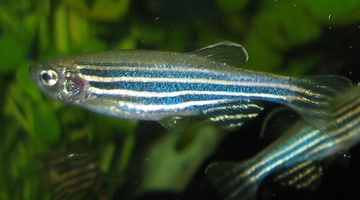Staff at Auckland University's Zebrafish Breeding Facility explain why these small fish are so useful.
Transcript
Don Love (Auckland University): We would like to understand human disease. Realising that we can’t experiment on humans, we look at a model system that can serve as a surrogate of humans. And we use the fish as that surrogate.
Peter Cattin (Auckland University): There are a number of reasons why they are a good model. Firstly, they produce a large number of eggs. The eggs are large in size. They are transparent. They hatch in 48 hours, so you’ve got the ability to look at developmental stages over a short time frame. You can see the initial cells divide every 20 minutes, which is fantastic, and 48 hours later you’ve got a swimming fry. The inter-generation time is only about two months. In fact, it’s been done in 47 days to go from F1 [the first generation of offspring] to F2 [the second generation, or the grandchildren].
During the first 48 hours, while the fry is still inside the chorion, the outer shell of the egg, you can see the heart pumping, the blood moving through the blood vessels, the muscle blocks or somites developing, the brain developing, the eye, the gills developing, the mouth begin to open, the external nares [nostrils] of the nose forming.


